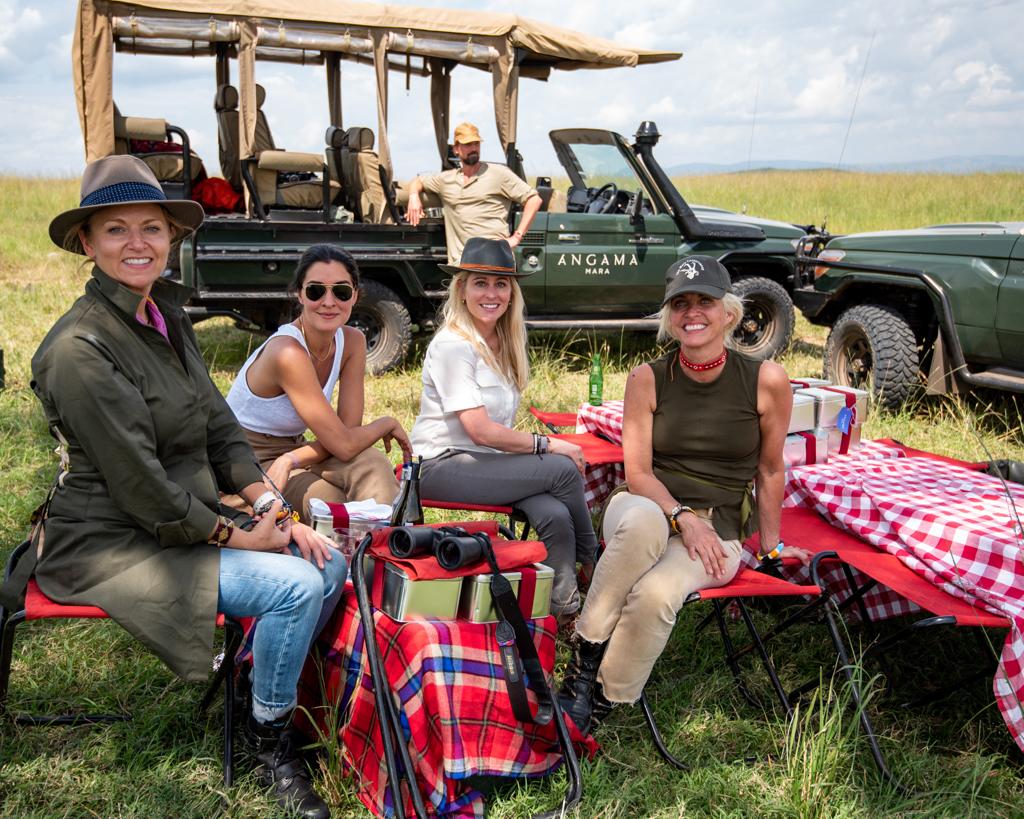
Share this Article
Our guide to how to dress for an African safari, plus what you should definitely not bring with you on this epic journey.


Going on safari in Africa is the ultimate adventure and the trip of a lifetime. But for those fortunate enough to make the journey for the first time, packing can seem like a bit of a mystery. What should you pack and how should you dress on safari? What should you not bring or wear on your trip?
Many of our Ubuntu Life community members are old safari pros, having been lucky enough to embark on a number of adventures into the bush. Read on for our guide to everything you need to know about what to pack for a safari and where to find safari style inspiration, plus answers to a few questions you might have before you hit the savanna.

Yes! After months of being shut down due to the COVID-19 pandemic, most safari operators in Kenya and throughout Africa are back up and running. There are many breathtaking lodges and camps to choose from, including our friends at the incredible Angama lodge in Kenya’s world famous Maasai Mara National Reserve.
The pandemic wasn’t all bad news for the safari business in Africa: while foregin tourists have traditionally made up the bulk of safari visitors to the continent, COVID-19 spurred a number of outfitters to offer “locals rates” for their excursions. As a result, many Africans have been able to start discovering the wonders of their continent’s wildlife and natural landscapes for the very first time.

While the question of what to wear on safari can really depend on where you’re going and when you’re traveling, here are a few recommendations for what to wear on safari any time of year:
- Neutral colored clothing—think, beige, khaki, brown, grey, cream, taupe—and anything green
- Long sleeved, breathable shirts
- A cotton or linen jumpsuit or romper
- A light-weight scarf or cotton blanket
- A cloth bag or canvas tote to hold all of your belongings
Comfortable, breathable shoes like our Classic Afridrilles or sturdy hiking boots if you’re going to be trekking
- Cargo pants
- Medium-weight jacket made of natural fibers—think cotton or light wool
- And don’t forget to accessorize your safari outfits with:
- Long sleeved, breathable shirts
- A cotton or linen jumpsuit or romper
- A light-weight scarf or cotton blanket
- A cloth bag or canvas tote to hold all of your belongings
Comfortable, breathable shoes like our Classic Afridrilles or sturdy hiking boots if you’re going to be trekking
- Cargo pants
- Medium-weight jacket made of natural fibers—think cotton or light wool
- And don’t forget to accessorize your safari outfits with:
A light-weight hat that will protect you from sun and rain
Hand-beaded Maasai tribal bracelets
Sunglasses
A statement necklace or earrings from local artisans—think the pieces in our African Market collection

Different countries have different dry and rainy seasons. In Kenya, April and May are generally the wettest months, while January and February are typically dry and hot. It can get cold on safari no matter what time of year you go, so layers will be your best friend!


- Sunscreen—we recommend SPF 30 or higher
- Bug spray
- Reusable water bottle and plenty of water
- Binoculars
- Journal with pen to record your sightings and notes from your game drives
- Motion sickness pills if you have a weak stomach—it can get bumpy out there!
- Camera
- Phone charger and power plug adaptors
- Bug spray
- Reusable water bottle and plenty of water
- Binoculars
- Journal with pen to record your sightings and notes from your game drives
- Motion sickness pills if you have a weak stomach—it can get bumpy out there!
- Camera
- Phone charger and power plug adaptors

- Any black or dark blue clothing, as these colors will attract tsetse flies
- Synthetic, non-breathable fabrics—you’ll be much more comfortable in cotton, linen, and other natural fibers
- Bright white clothing or footwear—unless you don’t mind getting a little dirty; dust and mud are common on safari
- Anything formal—safaris are a casual affair!
- Rigid denim or other restrictive clothing
- Flip flops, slides, or unstable sandals of any kind
- Synthetic, non-breathable fabrics—you’ll be much more comfortable in cotton, linen, and other natural fibers
- Bright white clothing or footwear—unless you don’t mind getting a little dirty; dust and mud are common on safari
- Anything formal—safaris are a casual affair!
- Rigid denim or other restrictive clothing
- Flip flops, slides, or unstable sandals of any kind

- Single-use plastic bags, as these are banned in many East African countries; also try to avoid plastic water bottles
- Drones—many camps, parks, and conservancies do not allow them
- Hair dryers from other countries, as many camps will not have the electricity or voltage to support them, even with adaptors
- Camouflage or military-inspired clothing—especially in southern African countries, as these garments are prohibited in Zimbabwe and discouraged in other areas
- Bulky electronic equipment you don’t need; it will slow you down and may even make your luggage too heavy for your bush flight
- Perfume or cologne—you don’t want to attract bugs!
- Drones—many camps, parks, and conservancies do not allow them
- Hair dryers from other countries, as many camps will not have the electricity or voltage to support them, even with adaptors
- Camouflage or military-inspired clothing—especially in southern African countries, as these garments are prohibited in Zimbabwe and discouraged in other areas
- Bulky electronic equipment you don’t need; it will slow you down and may even make your luggage too heavy for your bush flight
- Perfume or cologne—you don’t want to attract bugs!

Want more safari style tips and ideas? Look no further! Kenayan travel blogger and lifestyle guru Silvia Njoki, fashion-forward Tanzanian travel photographer Neema-Jodie Ngelime, and stylish Cameroonian solo adventurer Milly Mira have all the #safaristyle inspo you need for your big trip!
Bon (and chic) voyage!

